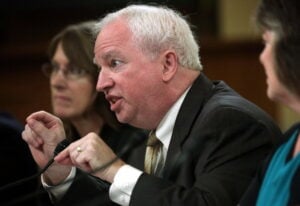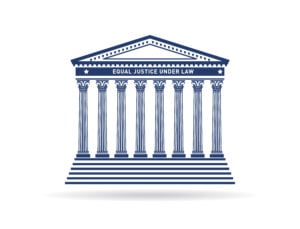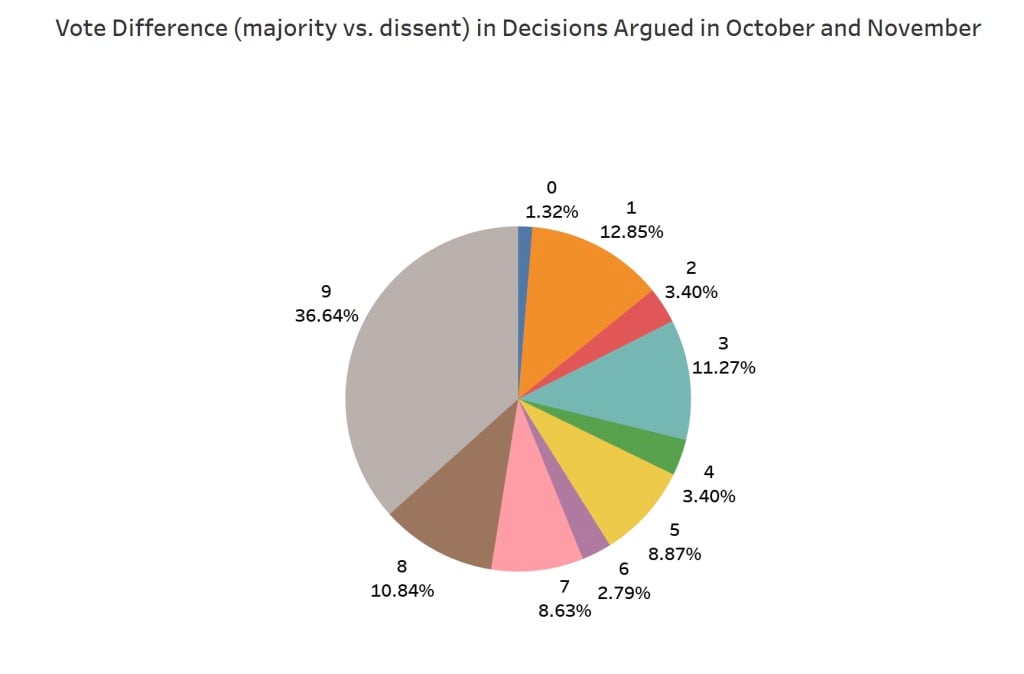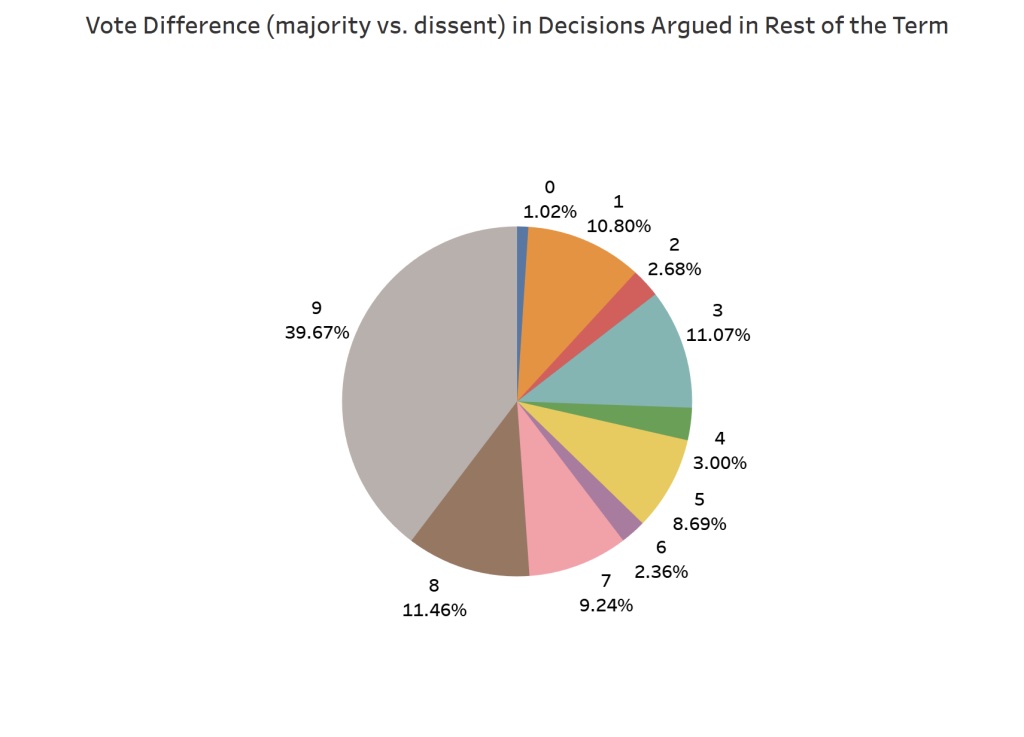Last
month,
Wolters
Kluwer
published
the
“Future
Ready
Lawyer
Survey
2022,”
a
global
survey
to
examine
how
client
expectations,
technology,
and
other
factors
are
affecting
the
future
of
law
across
core
areas
and
how
legal
organizations
are
prepared
to
address
them.
This
will
be
the
first
in
a
series
of
articles
covering
the
results
of
the
survey,
trends
we’ve
identified,
and
takeaways
that
legal
professionals
should
consider
as
we
look
to
the
future
of
the
industry.
This
is
the
fourth
consecutive
year
that
Wolters
Kluwer
has
conducted
the
“Future
Ready
Lawyer
Survey,”
conducting
quantitative
interviews
with
more
than
750
professionals
in
law
firms,
legal
departments,
and
business
services
firms
across
the
U.S.
and
10
European
countries.
Over
time,
it
has
provided
timely
perspective
on
factors
driving
change
across
the
industry,
with
benchmark
data
on
both
pre-
and
post-COVID
trends
in
the
profession,
and
assessing
organizations’
readiness
to
face
those
changes.
This
year’s
survey
was
conducted
with
the
backdrop
of
volatility.
While
we’re
largely
past
the
worst
moments
of
the
pandemic,
we
are
now
entering
a
world
of
geopolitical
uncertainty
in
light
of
the
conflict
in
Ukraine
and
tensions
in
other
parts
of
the
world.
We
are
experiencing
inflation
in
most
of
the
world
and
may
be
looking
at
a
full-blown
recession
in
the
coming
months.
Despite
the
potential
of
an
extended
economic
downturn,
we
are
still
seeing
talent
shortages.
We
are
living
in
a
world
influenced
by
“VUCA”
factors
—
Volatility,
Uncertainty,
Complexity,
and
Ambiguity.
Continued
technological
change
and
increasing
regulatory
pressures
are
affecting
consumers
and
businesses
alike
—
and
while
this
presents
a
very
good
opportunity
for
the
legal
industry,
legal
professionals
must
be
prepared
to
take
on
the
challenges
that
come
with
it.
Pressure
Is
Driving
Change
With
this
VUCA
backdrop,
the
survey
found
that
legal
professionals
are
pressured
today
by
perpetual
and
pervasive
change
and
a
continuation
in
increased
expectations
for
both
in-house
counsel
and
law
firms.
This
continues
to
impact
the
relationships
between
clients
and
firms.
Clients
are
happier
with
their
firms,
but
at
the
same
time,
nearly
one
in
three
clients
(32%)
reported
they
are
very
likely
to
switch
firms.
This
is
up
from
one
in
eight
in
2020.
Legal
tech
funding
has
been
hot
for
the
past
few
years,
hitting
a
record
of
$9.1
billion
in
investment
in
2021.
Many
might
think
that
new
technology
is
the
driver
of
change
in
the
legal
industry
—
but
it
is
my
view
that
the
pressure
and
increased
expectations
on
legal
departments
(and
hence
their
outside
firms)
is
the
key
driver
to
the
tech
adoption
we’re
experiencing.
Technology
is
advancing,
but
I
would
argue
that
the
pressure
for
change
is
at
the
core
of
change
in
the
industry.
With
this
theory
in
mind,
the
other
key
findings
of
the
survey
are
perhaps
more
explainable.
-
Technology
is
a
top
performance
driver.
Almost
all
(97%)
of
corporate
legal
departments
will
ask
law
firms
to
describe
the
technology
they
use
to
be
more
productive
and
efficient,
up
from
70%
two
years
ago.
Also,
91%
of
legal
departments
expect
firms
to
use
technology
to
be
more
productive
and
efficient.
The
need
for
technology
is
even
affecting
law
firms
to
the
point
that
88%
of
attorneys
in
firms
believe
this
to
be
important
to
their
clients
now.
So
there
is
a
growing
consensus
here
that
didn’t
exist
as
much
just
a
few
years
ago.
-
Who
does
the
work
is
changing.
86%
of
in-house
counsel
report
greater
in-sourcing
of
legal
work.
The
same
percentage
expect
greater
use
of
alternate
fee
structures
that
are
not
tied
to
billable
hours.
The
expectation
to
use
Alternative
Legal
Service
Providers
(ALSPs)
went
to
84%
from
68%
in
the
past
two
years.
So
we
have
more
pressure
overall
and
an
emerging
consensus
on
technology
as
a
top
performance
driver.
Who
does
what
work
is
changing,
and
the
terms
on
how
work
is
contracted
is
evolving.
ALSPs
are
an
increasingly
viable
option
for
some
work,
and
nearly
one
in
three
in-house
attorneys
is
very
likely
to
switch
firms
in
the
coming
year.
The
Pressure
Is
Particularly
Felt
By
Law
Firm
Professionals
Based
on
the
survey’s
results,
the
pressure
is
really
on
law
firms
—
and
while
this
is
true,
we
do
need
to
view
change
in
the
context
of
an
increasing
demand
for
legal
services.
The
pandemic
and
VUCA
environment
have
driven
a
lot
of
demand
for
legal
services.
2021
was
a
phenomenal
year
for
law
firms;
the
LegalVIEW
report
conducted
by
Wolters
Kluwer’s
ELM
Solutions
business
reported
that
the
mean
legal
spend
in
large
corporate
legal
departments
went
up
36%
last
year,
meaning
more
money
was
spent
with
outside
firms.
2022
is
shaping
up
to
be
a
very
good
year
too,
and
that
puts
pressure
on
firms
to
keep
up
with
demand
as
talent
is
in
short
supply.
Efficiency
drive
by
technology
would
seem
to
be
an
answer.
But
only
35%
of
law
firm
attorneys
think
their
firms
are
very
prepared
to
address
technology
change.
(I
will
discuss
in
a
future
article
what
may
be
behind
this.)
And
what
if
the
economy
tanks?
Will
technology-savvy
firms
be
more
competitive
if
a
pivot
is
required
based
upon
changing
economic
conditions?
Good
News:
Leadership
Resistance
To
Technology
Change
Is
Waning
In
past
surveys,
leadership
resistance
to
change
was
cited
as
one
of
the
inhibitors
to
technology
adoption.
In
2020,
respondents
said
that
the
difficulty
of
change
management
and
leadership
resistance
to
change
was
the
biggest
barrier
to
implementing
change
for
both
corporate
legal
departments
(65%)
and
law
firms
(53%).
But
in
this
year’s
survey,
leadership
resistance
is
no
longer
on
the
radar.
This
is
a
very
good
sign.
This
suggests
to
me
that
firms
now
see
the
need
for
greater
technology
use,
and
their
leadership
has
the
appetite
to
support
technology
projects.
The
key
moving
forward
will
be
the
effective
adoption
of
technology
to
drive
results
in
support
of
clients.
Technology
projects
almost
always
require
change
in
how
people
work
and
the
processes
around
technology.
It
is
very
common
for
a
good
technology
to
be
deployed
but
not
achieve
adoption.
This
is
particularly
the
case
when
there
isn’t
executive
sponsorship
from
the
top.
Organizational
issues
were
cited
(43%)
as
a
reason
why
law
firms
resist
new
technology.
My
advice
to
legal
professionals
is
to
ensure
that
leadership
understands
that
supporting
the
deployment
of
technology
is
a
great
step
forward,
but
the
real
need
is
for
leadership
advocacy
in
the
adoption
of
technology.
Helping
leadership
understand
how
to
advocate
for
change
in
process
and
skills
to
enable
successful
outcomes
is
going
to
be
key.
We’ve
crossed
over
from
the
pandemic
to
a
new
normal
—
but
that
new
normal
is
perhaps
not
what
we
were
expecting.
In
the
face
of
global
volatility,
uncertainty,
complexity,
and
ambiguity,
the
legal
industry
must
adapt
to
change.
That
change
will
require
flexibility,
agility,
and
a
holistic
view
of
change
to
keep
pace.
Both
law
firms
and
law
departments
can
leverage
talent,
successful
deployment
of
technology,
and
change
management
to
relieve
some
of
the
pressures
they
are
experiencing.
Using
the
results
of
the
“Future
Ready
Lawyer
Survey
2022,”
I’ll
share
some
insights
on
that
next
month.
 Ken
Ken
Crutchfield
is
Vice
President
and
General
Manager
of
Legal
Markets
at
Wolters
Kluwer
Legal
&
Regulatory
U.S.,
a
leading
provider
of
information,
business
intelligence,
regulatory
and
legal
workflow
solutions.
Ken
has
more
than
three
decades
of
experience
as
a
leader
in
information
and
software
solutions
across
industries.
He
can
be
reached
at ken.crutchfield@wolterskluwer.com.





 Nathalie
Nathalie


 Kathryn
Kathryn


 Jordan
Jordan
 Ken
Ken








